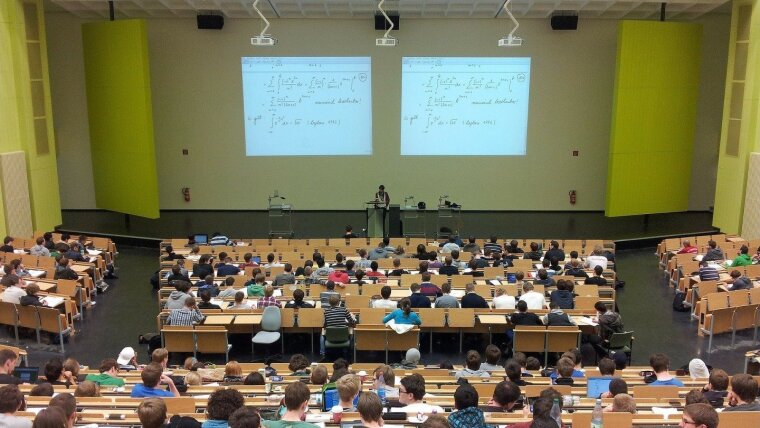
Symbolbild Vorlesung
Phase 1: Recording Inputs
- Record reasonable inputs (of up to 30 minutes) that your students can watch independent from a specific time and space.
- Technically, the recording can be done directly on your computer with Opencast in Moodle or programs such as Powerpoint, Camstudio etc. Or you ask the university’s Multimediazentrum for a recording directly in one of the lecture halls.
- Your recorded videos may be shorter than your normal lecture time. Consider your students’ workload as specified in the Modulkatalog and allow for time for tasks and exchange.
Phase 2: Tasks and Assignments
- Give your students incentives to actively engage with the presented topics. This will help students to internalize content and to connect it to their prior knowledge. Actively engaging with the topics also may help students to put questions to the material.
- Students can fulfill all tasks and assignments independent from a specific time and space.
- Examples for tasks: discussions about deepening questions (via Forum in Moodle or via Tweedback), quizzes (e.g., via Tests in Moodle), or by collecting research results on a virtual pin board (e.g., via Padlet).
Phase 3: Exchange
- Create possibilities for students to compare results and/or to clarify open questions. Bringing students into exchange may also help to deepen their understanding.
- Here you can either work synchronously by web conferencing (e.g., via Zoom) or to meet your students in a chat (e.g., via Tweedback Chatwall). Or you organize the exchange asynchronously by using Forum in Moodle.
- In any case it is important to give incentives in order to initiate exchange. Experience shows that exchange rarely starts without some external stimulus. You could, for example, address questions to your students in order to facilitate the start of a discussion. With your learning goals in mind, try to give tips and clues during the discussion in order to steer it into the right direction.
- For receiving a first feedback from your students or for sensitizing them for the exchange you can also start with a survey (e.g., via Pingo or Mentimeter).
- Consider writing minutes to permanently document the results of the exchange.